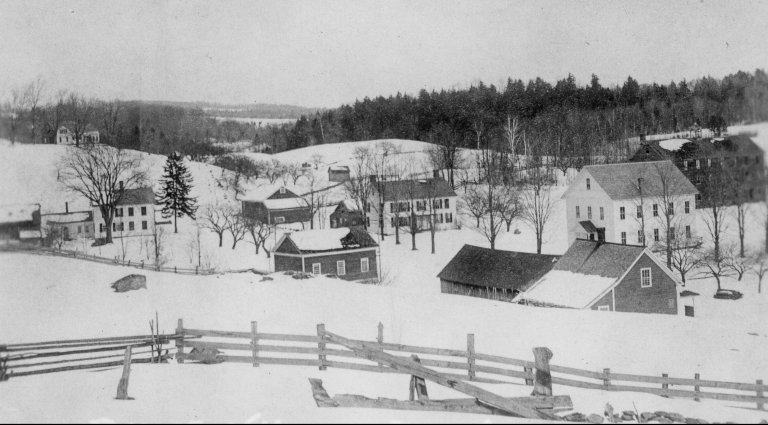
Mill Pond Sawmill
The Mill Pond sawmill was built by Ambrose Stone in 1835 and some of the early lumber was used in the building of the Satinet Factory. Amidon and Stockwell owned the sawmill in 1857. Hosea Nelson and David Henry ran it from 1871 to 1878.
The building was a long, unpainted affair standing just below the mill dam on the west side of the narrow valley of Pelham Brook. On the other side of the brook was the blacksmith shop. The upper story of the mill began near the dam contained a large circular saw used for sawing logs and making dimensional lumber, at least two smaller circular saws for edging boards and making smaller dimensional stuff (laths and shingles), a band saw for cutting curved stock and in later years a planer.
The lower region housed a grist mill, a cider press and a space to store sawdust and shavings which was in high demand for stable bedding. The grist mill was only used occasionally in the last half of the century and the cider enterprise was used for custom pressing. The pomace from crushed apples was sent down the brook.
The mill was powered by a horizontal wheel housed in an iron casing in the bed of the brook. Water was let in from the dam through a board flume. Power was dispersed by a series of belts and pulleys. The mill building stood back some distance from the main road opposite Alfred Reed’s house (now owned by Rowe Camp).
The mill yard was generally cluttered with logs waiting to be sawn and piles of slabs. The slabs were sold for summer firewood or for sugaring in spring. With sales of slabs being seasonal the piles would tend to build up and the center of town became known as “Slab City.”
Sawmill on the left, blacksmith on the right.
Text by Joanne Semanie. Photos from the Museum archive.


